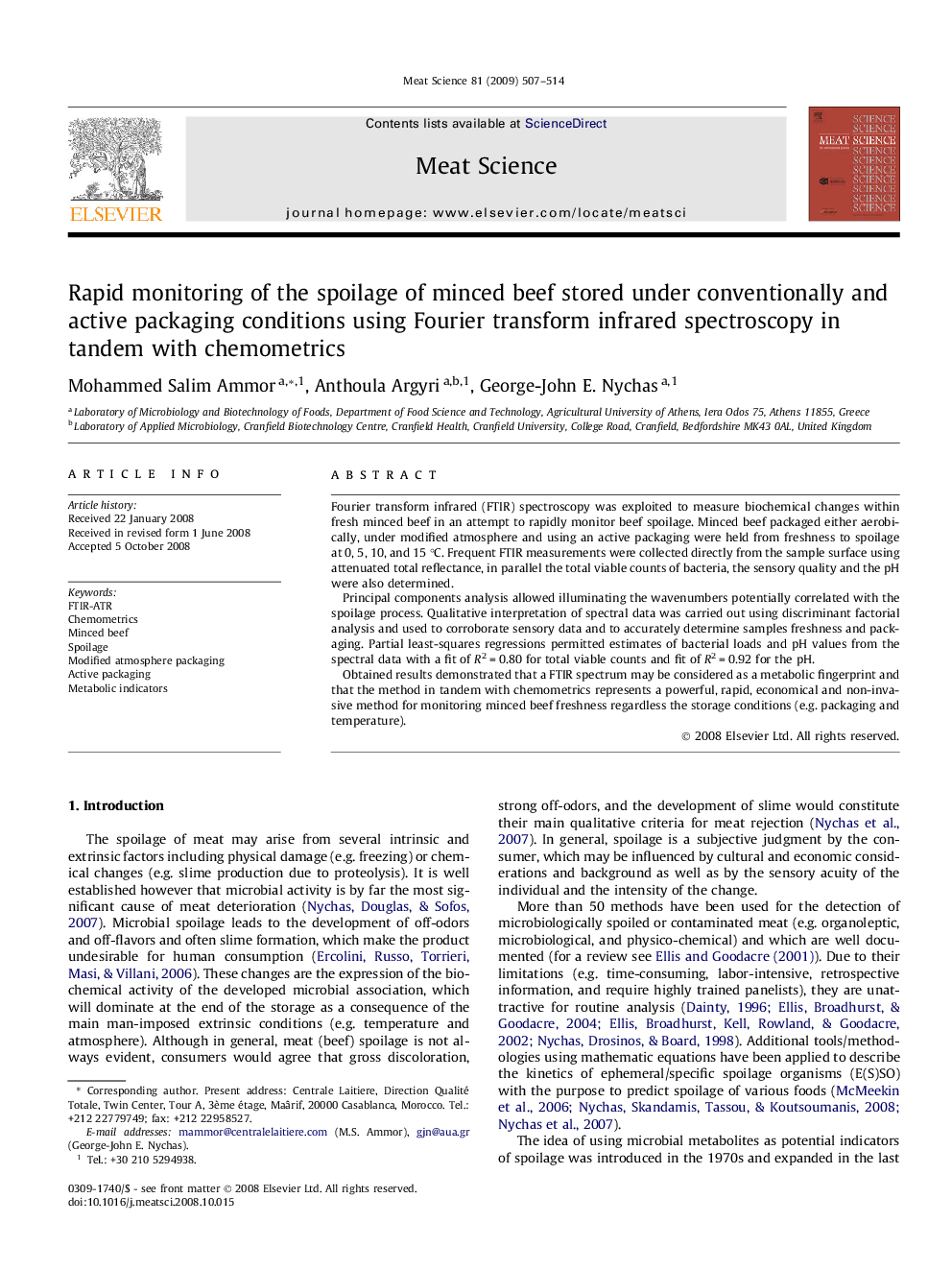| Article ID | Journal | Published Year | Pages | File Type |
|---|---|---|---|---|
| 2451241 | Meat Science | 2009 | 8 Pages |
Fourier transform infrared (FTIR) spectroscopy was exploited to measure biochemical changes within fresh minced beef in an attempt to rapidly monitor beef spoilage. Minced beef packaged either aerobically, under modified atmosphere and using an active packaging were held from freshness to spoilage at 0, 5, 10, and 15 °C. Frequent FTIR measurements were collected directly from the sample surface using attenuated total reflectance, in parallel the total viable counts of bacteria, the sensory quality and the pH were also determined.Principal components analysis allowed illuminating the wavenumbers potentially correlated with the spoilage process. Qualitative interpretation of spectral data was carried out using discriminant factorial analysis and used to corroborate sensory data and to accurately determine samples freshness and packaging. Partial least-squares regressions permitted estimates of bacterial loads and pH values from the spectral data with a fit of R2 = 0.80 for total viable counts and fit of R2 = 0.92 for the pH.Obtained results demonstrated that a FTIR spectrum may be considered as a metabolic fingerprint and that the method in tandem with chemometrics represents a powerful, rapid, economical and non-invasive method for monitoring minced beef freshness regardless the storage conditions (e.g. packaging and temperature).
